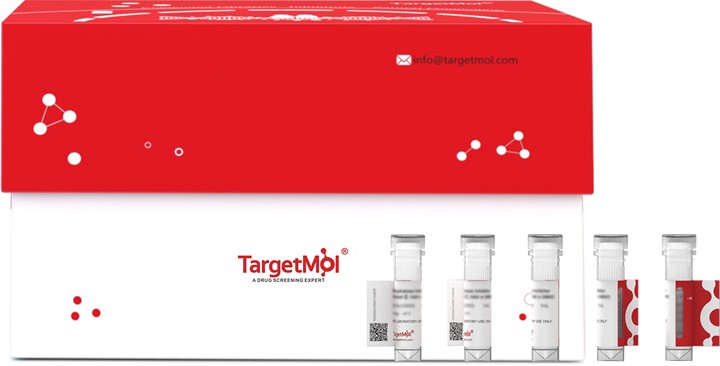Shopping Cart
Remove All Your shopping cart is currently empty
Your shopping cart is currently empty
RGS5 is a member of the RGS superfamily and acts as a negative regulator of heterotrimeric G protein-mediated signalling through G protein-coupled receptors (GPCRs). The regulator of G-protein signaling (RGS) proteins have recently been identified as signal transduction molecules which have structural homology to SST2 of Saccharomyces cerevisiae and EGL-10 of Caenorhabditis elegans. The messenger RNA of hRGS5 was abundantly expressed in heart, lung, skeletal muscle, and small intestine, and at low levels in brain, placenta, liver, colon, and leukocytes.

| Pack Size | Price | USA Warehouse | Global Warehouse | Quantity |
|---|---|---|---|---|
| 5 μg | $68 | 7-10 days | 7-10 days | |
| 10 μg | $108 | 7-10 days | 7-10 days | |
| 20 μg | $178 | 7-10 days | 7-10 days | |
| 50 μg | $359 | 7-10 days | 7-10 days | |
| 100 μg | $696 | 7-10 days | 7-10 days |
| Biological Activity | Activity testing is in progress. It is theoretically active, but we cannot guarantee it. If you require protein activity, we recommend choosing the eukaryotic expression version first. |
| Description | RGS5 is a member of the RGS superfamily and acts as a negative regulator of heterotrimeric G protein-mediated signalling through G protein-coupled receptors (GPCRs). The regulator of G-protein signaling (RGS) proteins have recently been identified as signal transduction molecules which have structural homology to SST2 of Saccharomyces cerevisiae and EGL-10 of Caenorhabditis elegans. The messenger RNA of hRGS5 was abundantly expressed in heart, lung, skeletal muscle, and small intestine, and at low levels in brain, placenta, liver, colon, and leukocytes. |
| Species | Human |
| Expression System | E. coli |
| Tag | N-His |
| Accession Number | O15539 |
| Synonyms | RGS5,regulator of G-protein signaling 5,MSTP129,MSTP106,MSTP092,MSTP032,MST129,MST106,MST092 |
| Construction | A DNA sequence encoding the human RGS5 (NP_003608.1) (Met1-Lys181) was expressed with a polyhistidine tag at the N-terminus. Predicted N terminal: His |
| Protein Purity | > 90 % as determined by SDS-PAGE |
| Molecular Weight | 23.2 kDa (predicted); 26 kDa (reducing conditions) |
| Endotoxin | Please contact us for more information. |
| Formulation | Lyophilized from a solution filtered through a 0.22 μm filter, containing PBS, pH 7.4. Typically, a mixture containing 5% to 8% trehalose, mannitol, and 0.01% Tween 80 is incorporated as a protective agent before lyophilization. |
| Reconstitution | A Certificate of Analysis (CoA) containing reconstitution instructions is included with the products. Please refer to the CoA for detailed information. |
| Stability & Storage | It is recommended to store recombinant proteins at -20°C to -80°C for future use. Lyophilized powders can be stably stored for over 12 months, while liquid products can be stored for 6-12 months at -80°C. For reconstituted protein solutions, the solution can be stored at -20°C to -80°C for at least 3 months. Please avoid multiple freeze-thaw cycles and store products in aliquots. |
| Shipping | In general, Lyophilized powders are shipping with blue ice. |
| Research Background | RGS5 is a member of the RGS superfamily and acts as a negative regulator of heterotrimeric G protein-mediated signalling through G protein-coupled receptors (GPCRs). The regulator of G-protein signaling (RGS) proteins have recently been identified as signal transduction molecules which have structural homology to SST2 of Saccharomyces cerevisiae and EGL-10 of Caenorhabditis elegans. The messenger RNA of hRGS5 was abundantly expressed in heart, lung, skeletal muscle, and small intestine, and at low levels in brain, placenta, liver, colon, and leukocytes. |
| Size | Quantity | Unit Price | Amount | Operation |
|---|

Copyright © 2015-2025 TargetMol Chemicals Inc. All Rights Reserved.